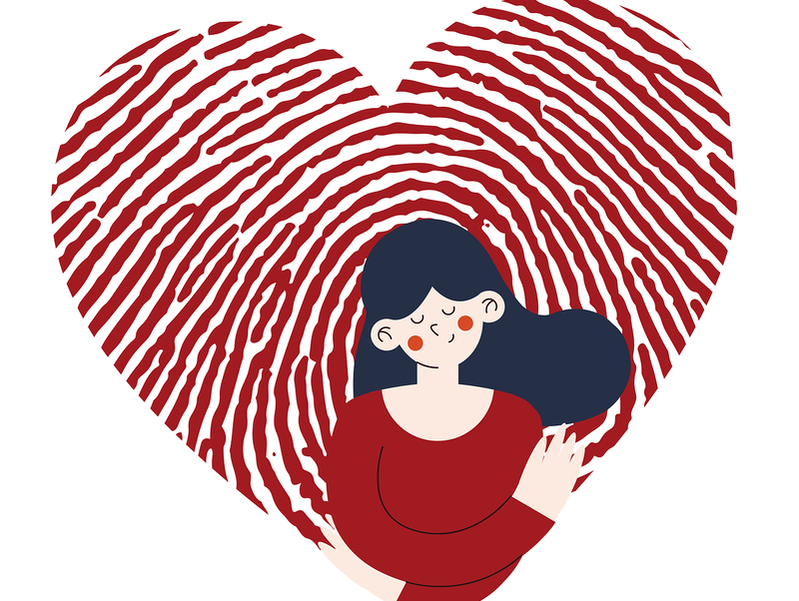|
Feature by Simran Bharadwaj Image via Freepik I just want some alone time!! Is it bad that I don't want to spend 24/7 with my partner?
Sound familiar? If you want space in a relationship, or if your partner wants space, it is easy to panic and catastrophize. Do they still love me? Am I annoying them? Are they annoyed with me? Are they going to leave me? The questions come flooding in, however it is useful to remember that some space in relationships is actually healthy. Giving space to your partner and taking some space for yourself can grow and recharge the relationship, maybe even allowing you to become closer over time.
0 Comments
Feature by Simran Bharadwaj Image via Freepik The new year tends to be all about forgiving and starting fresh, letting things go to be on better terms with friends or family members. As a result, there may feel like there is pressure to do so despite the trauma that some individuals may have caused. However, forgiving does not mean forgetting what someone has done and allowing them to keep pushing your boundaries. You can forgive someone and still:
Forgiving a person can be therapeutic and healing for you despite the trauma that they have caused. It allows for you to understand the impact this individual had on your life and why you need to maintain your boundaries with them. It can help develop healthy relationships in the future because you are more attentive to your needs within a relationship. Forgiveness can lead to inner peace which can positively impact physiological wellness and can offer protection against upsetting relationships in the future. It definitely is not easy to forgive someone who you know has wronged you, however there are five skills that can help with finding the right balance between forgiving and maintaining your healthy boundaries. Skills for Forgiveness: 1. Acceptance Acceptance does not mean accepting defeat. It means understanding and accepting the situation at hand. This allows for you to alter your view about a situation and accept that there is nothing you can change about the past while being able to maintain healthy boundaries in the present 2. Emotional Regulation It is important to recognize the emotions that you are feeling rather than suppressing them within. This will help to manage your emotions rather than allowing them to take over your body. 3. Shifting Perspectives Mindfulness practices can assist in standing back and observing your thoughts and feelings. This awareness of what you are feeling can allow for your mind and body to create a shift in the way you think about a situation. 4. Empathy and Compassion Empathy allows you to understand another’s emotions. Understanding how the other might be thinking and feeling can be helpful towards a path of forgiveness. 5. Radical Responsibility Responsibility requires you to be accountable for your actions, thoughts and feelings. This can mean admitting to your own mistakes in a situation. Recognizing unhealthy behaviors can help prevent you from repeating them. Regaining control of how you act and react to given situations can help allow you to see the benefits of forgiving others while maintaining the boundaries that you need in order to have meaningful relationships. These techniques can be used with friends as well as family members. Individuals often feel that they are required to forgive family because there is “no bond greater than blood,” however maintaining boundaries is a healthy aspect of being able to forgive someone and let go of the anger and resentment you may have. AuthorSimran Bharadwaj is a pre-professional licensed mental health therapist in New York City. You can contact Simran at [email protected] and read more blog posts at www.mwr.nyc.
Feature by Nikita Fernandes I recently attended a phenomenal presentation by Dr. Lee Phillips through the Modern Sex Therapy Institute where I learned about the concept of sexual self-esteem. Sexual self-esteem refers to the way we conceptualize our sexual selves. It is the beliefs that people have about themselves as sexual beings. Someone with high sexual self-esteem might feel confident in their body and their sexuality and hence enjoy solo or partnered sex. Someone with low sexual self-esteem might have a hard time accepting their body and might struggle to feel comfortable in partnered sex. The formation of sexual self-esteem can be traced to a variety of factors including someone's upbringing, religious background, ethnicity, gender, etc. Someone who had a secure attachment style with their caregivers might struggle less with sexual self-esteem as attachment styles in early childhood development also play a role in the formation of sexual self-esteem.
Feature by Simran Bharadwaj  Image by vectorjuice on Freepik I hope to god they don’t mention anything about my weight. I think I’ve lost a couple pounds since the last time I went home. Will they notice? Maybe I’ll just suck it in and not eat that much at dinner. They won’t notice anything then…Right? As the holiday season approaches, we feel ourselves mentally preparing to see our families. Often the biggest concern for many is someone commenting on their weight. Women especially have felt the need to look thinner each time they go back to visit their families. In an effort to look thinner and not be commented on in a negative way, many have taken to sucking in their stomach. It feels like an easy way to avoid all the comments. However, sucking in your stomach too often or for too long can lead to health implications. Stomach gripping is when individuals repeatedly and for prolonged periods of time suck in their abdomen in an effort to appear as if they have a flatter stomach. It leads to training upper abdominal muscles to contract for long periods of time and in an unnatural manner. This can lead to back pain, breathing problems, and other health concerns which then leads to imbalances known as “hourglass syndrome.” Although an hourglass can be considered a preferred body shape, hourglass syndrome is nothing to envy. As a result of stomach gripping, the lower abdominal muscles are underused and become weak. The four muscles that become overused are the upper fibers of the rectus abdominis, internal obliques, transversus abdominis and the diaphragm. In an effort to look thinner, the rest of our body is put at risk of weakened muscles and health problems. If you notice back and neck problems, a horizontal line on your stomach, a weak pelvic floor, or other signs of stomach gripping, try to break the habit by practicing proper breathing techniques. This holiday season, let us try to practice body positivity or body neutrality and be comfortable in our skin potentially starting with therapy to help challenge thoughts and feelings tied to body image concerns. Cognitive behavioral therapy can help challenge thoughts regarding body image concerns and increase self-esteem. Developing a more realistic perception of your body through using kind and positive self-talk and cognitive restructuring can help avoid the preoccupation of negative body image thoughts. Maintaining a self care routine through journaling and avoiding compulsive behaviors will take practice and patience however will also help avoid physical ailments in the future. AuthorSimran Bharadwaj is a pre-professional licensed mental health therapist in New York City. You can contact Simran at [email protected] and read more blog posts at www.mwr.nyc.
Feature by Nikita Fernandes Image via Vecteezy The illustrator and author Mari Andrew wrote a beautiful piece titled "On Being an Extremely Jealous Person," in which she shares that the hardest part of jealousy is the shame we feel around it, thinking we should be better. Experiencing jealousy is a human reaction. It can be uncomfortable to feel but as human beings, we deal with jealousy during different stages of our lives. People might feel jealous in their interpersonal relationships. For example, an individual might feel jealous when they see their partner flirting with someone else. People also experience jealousy in platonic relationships like friendships and family. Now that we've acknowledged that jealousy is universal, let's explore how to cope with it.
Feature by Nikita Fernandes Image via Unplash ADHD or attention-deficit/hyperactivity disorder is a state of neurodivergence in which people's executive functioning skills are impacted differently from people without ADHD. According to the National Institute of Mental Health, people with ADHD experience inattention, hyperactivity and impulsivity. There was recently a surge on the tiktok platform of people claiming they have ADHD. Although the symptoms of ADHD are recognizable in childhood, some people go years without being diagnosed and find out late into adulthood. This can bring about an identity shift in how they've previously seen themselves. There is a lot of research that exists about ADHD during childhood but the research looking at adult ADHD is still scarce.
Feature by Nikita Fernandes Via Pixabay In her book Milk and Honey, poet Rupi Kaur writes, "How you love yourself is how you teach others to love you." But what does loving yourself look like? I believe that loving ourselves looks like having a secure attachment with ourselves. Let's learn about where the idea of a secure attachment came from.
Back in the 1990's, researchers named John Bolby and Mary Ainsworth came up with attachment theory which spoke to how human beings relationships with their parents later impacted their relationship patterns as adults. Three attachment styles were put forth: secure attachment, anxious attachment and avoidant attachment. For example, if someone grew up with an absentee parent, they are likely to develop an avoidant attachment and ghost potential partners for fear of being rejected. To heal insecure attachments, mental health therapy can help us develop more secure relationships with our potential partners. I'd therefore like to take this one step forward and focus on developing a secure relationship with ourselves. Feature by Nikita Fernandes Imago Relationship Therapy is a type of relationship and couples therapy that focuses on relational counseling to turn any conflicts between couples into chances for healing and progress. It was created by Drs. Harville Hendrix and Helen LaKelly Hunt in 1980. The word 'imago' means image in Latin. The idea behind the therapy is to help couples understand what their partner is saying and how their partner might be feeling. Using imago therapy with couples has been beneficial in helping clarify misconceptions, reduce conflict, and rediscover ways to connect with and communicate effectively with one another.
Feature by Nikita Fernandes Via Pixabay Narrative Therapy has emerged as one of the most powerful types of therapy to support minority communities. It has gained popularity in 2022 along with the rise of movements such as the Black Lives Matter and the focus on mental health after the pandemic. Narrative therapy is relatively new. It was developed in the 1980's by Michael White, an Australian social worker, and David Epston, a family therapist from New Zealand. It gained traction in the United States in the 1990's.
Narrative therapy is a nonpathologizing, empowering and collaborative experience for clients who hold minority identities. The empowering nature of this therapy can be experienced through nudging clients to reframe their past experiences, gain control over their present and shape a better future. Narrative therapy uses prompts to have client reflect over the stories they tell themselves about their life. For example, a therapist might ask a client to write about their past struggles and highlight what helped keep them afloat. This strengths based approach can help remind clients that they are much more resilient than they believe. Feature by Nikita Fernandes Via Pixabay Richard Schwartz created the Internal Family Systems (IFS) model to work with clients who held conflicting views of themselves. He explained these conflicts as having various parts within ourselves. As human beings, we are made up of different parts that serve specific functions. Internal Family Systems is a powerfully transformative, evidence-based model of psychotherapy. The mind is considered to be naturally made up of multiple sub-personalities or families within each individual’s mental system. These sub-personalities take on different roles, such as an inner critic or inner child, and consist of wounded parts and painful feelings like anger and shame.
|
Authors
Archives
February 2023
Categories
All
|









 RSS Feed
RSS Feed